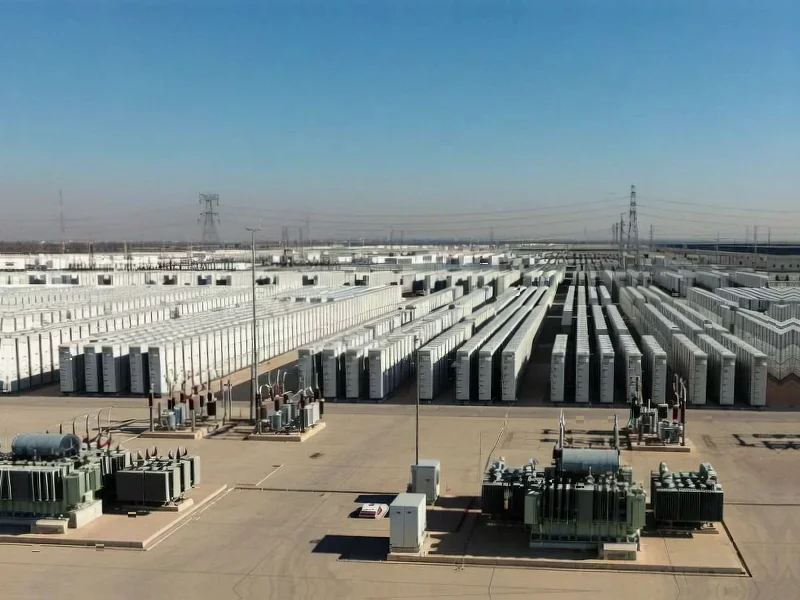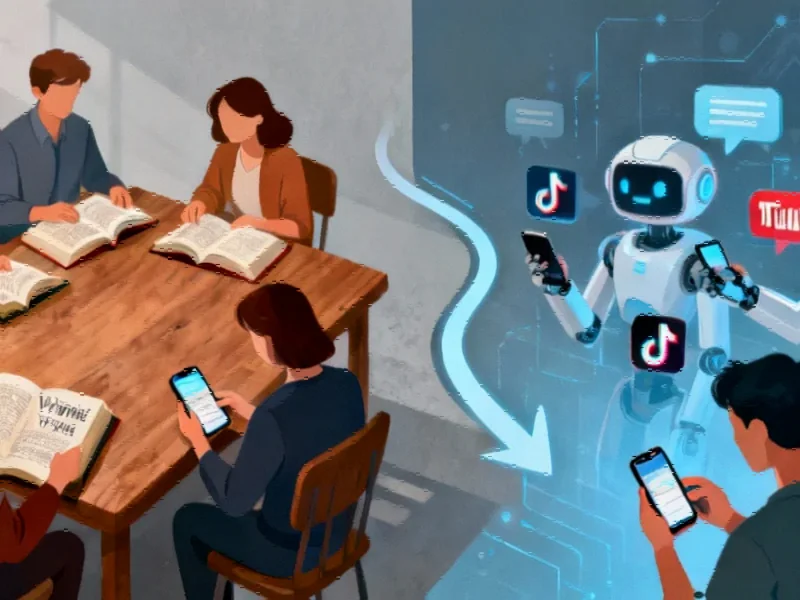According to Gizmodo, the next big trend in AI and robotics is swarms—decentralized networks of smaller systems working together. Startup Fortytwo just published benchmarks showing its approach of running small AI models on personal computers outperformed giants like OpenAI’s GPT-5, Google’s Gemini 2.5 Pro, Anthropic’s Claude Opus 4.1, and DeepSeek’s R1 in reasoning tests. The company’s theory is that large models get stuck in reasoning loops, while smaller models provide multiple answers that can be ranked for the best solution. Meanwhile, robotics researchers are developing colony-like communication systems where simple robots work together on complex tasks like wildfire monitoring or clearing blood vessel blockages. In one experiment, robots with just three abilities—move forward, make sound, and listen to neighbors—successfully navigated obstacles as a swarm that they couldn’t handle individually.
Why This Changes Everything
Here’s the thing: we’ve been operating under the assumption that bigger is better when it comes to AI. More parameters, more data, more computing power. But what if that’s actually the wrong approach for certain types of problems? The swarm concept suggests that sometimes, many smaller, specialized brains working together can outperform one massive brain.
Think about how this could transform the economics of AI. Right now, running these massive models requires building billion-dollar data centers that consume enormous amounts of energy and resources. But if you can distribute the work across existing devices—people’s computers, phones, even IoT devices—suddenly the barrier to entry drops dramatically. It’s basically the same principle that powers cryptocurrencies, just applied to intelligence rather than transactions.
What This Means For Regular People
So how would this actually affect you? Well, imagine AI that doesn’t require constant internet connection to a massive server farm. Your devices could work together to solve problems locally. Your smart home devices could coordinate without needing to phone home to Amazon or Google. Your medical devices could work as a team inside your body.
And here’s an interesting thought: what if this becomes the privacy-preserving alternative to today’s cloud AI? Instead of sending your data to some massive corporation’s servers, the processing happens across your own devices. That’s a pretty compelling value proposition in an era where people are increasingly concerned about data ownership.
The Business Implications
For developers and startups, this could be huge. The current AI landscape is dominated by companies with the resources to build and maintain massive infrastructure. But swarm approaches like what Fortytwo is developing could level the playing field. Suddenly, you don’t need billions in venture funding to compete—you just need a clever approach to coordinating smaller models.
But let’s be real—there are challenges too. Coordinating thousands of devices is no simple task. Security becomes a nightmare when you’re distributing work across potentially untrusted devices. And let’s not forget the incentive problem: why would people contribute their computing resources? Fortytwo’s crypto-based reward system is one approach, but will that be enough to build critical mass?
The robotics side is equally fascinating. Instead of building one incredibly complex, expensive robot, you could deploy hundreds of simple, cheap ones that work together. If one fails, the others compensate. That’s reliability through redundancy—and it could make robotics applications much more practical in unpredictable real-world environments.
The Bigger Picture
What’s really interesting here is how this mirrors natural systems. Ant colonies, bee swarms, bird flocks—they all demonstrate that collective intelligence can emerge from simple individuals following basic rules. Now we’re seeing the same principle applied to technology.
Does this mean the era of massive AI models is over? Probably not. But it does suggest that the future might be more diverse than we thought. Some problems will still benefit from massive centralized models, while others might be better solved by distributed swarms. The most exciting applications might even combine both approaches.
One thing’s for sure: after years of everything getting bigger and more centralized, the swarm represents a fascinating counter-trend. And if the early results hold up, we’re going to be hearing a lot more about this approach in the coming months.




